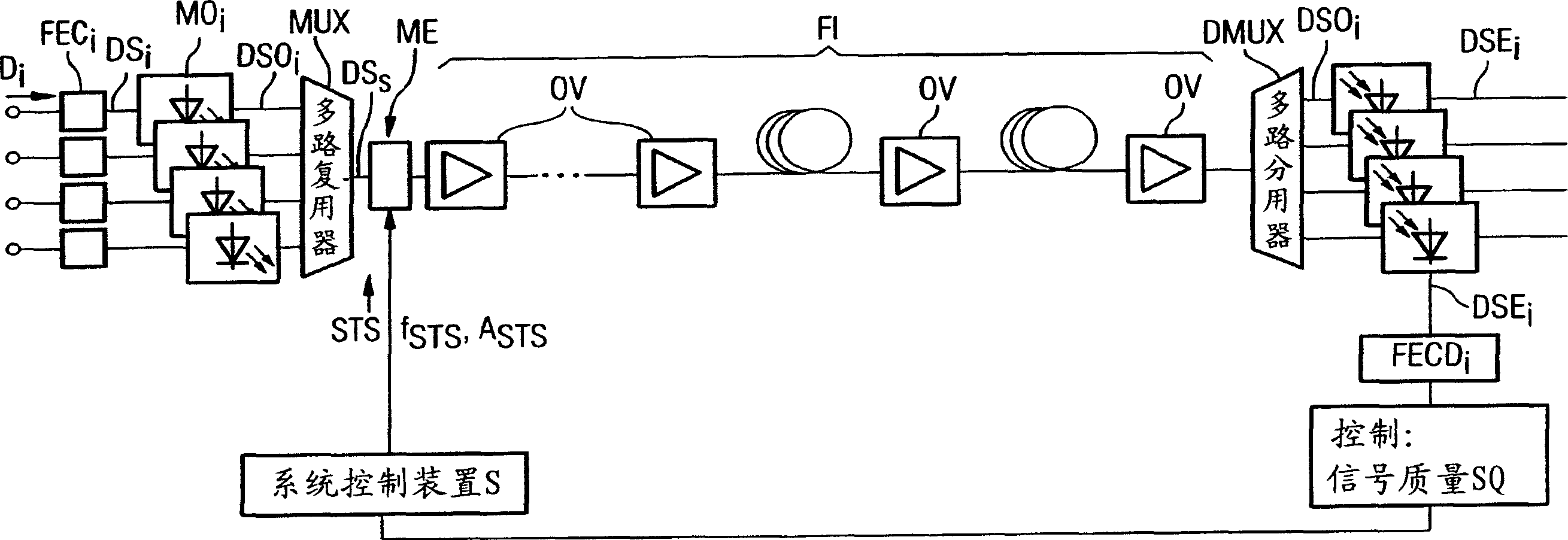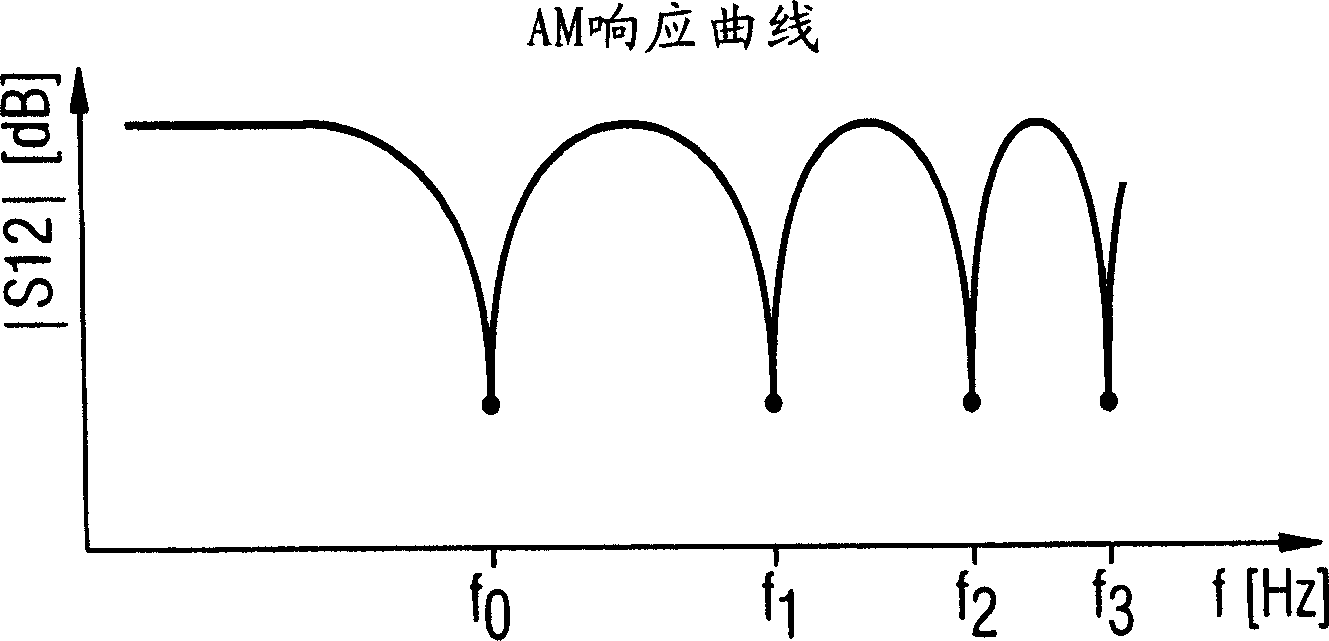Method and arrangement for determining the dispersion of an optical transmission link
An optical transmission and line technology, which is used in measurement devices, transmission systems, electromagnetic wave transmission systems, etc.
- Summary
- Abstract
- Description
- Claims
- Application Information
AI Technical Summary
Problems solved by technology
Method used
Image
Examples
Embodiment Construction
[0021] in like figure 1 In the optical transmission line schematically shown in , the data signal D to be transmitted i First in the FEC encoder FEC i protected in. Then multiple optical carrier signals in the modulator MO i The coded data signal DS is used within i modulation, and the optical data signal DSO i Compiled into a multiplexed signal DS on the transmit side by the multiplexer MUX S . All optical data signals DS output by the multiplexer MUX S Together, they are modulated (preferably amplitude modulated) in the modulation unit ME to form a sinusoidal interference signal STS. The term "modulation" here is also intended to include the same effect caused by superposition. The signal quality thus deteriorates and the number of bit errors to be corrected by FEC increases. Interfering signal STS not only at frequency f STS and at amplitude A STS above can be changed. The two modulation parameters are adjusted using the system controller S. After passing throu...
PUM
 Login to View More
Login to View More Abstract
Description
Claims
Application Information
 Login to View More
Login to View More - R&D
- Intellectual Property
- Life Sciences
- Materials
- Tech Scout
- Unparalleled Data Quality
- Higher Quality Content
- 60% Fewer Hallucinations
Browse by: Latest US Patents, China's latest patents, Technical Efficacy Thesaurus, Application Domain, Technology Topic, Popular Technical Reports.
© 2025 PatSnap. All rights reserved.Legal|Privacy policy|Modern Slavery Act Transparency Statement|Sitemap|About US| Contact US: help@patsnap.com



